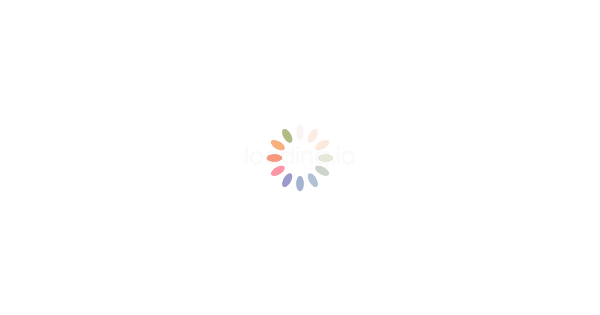Regulatory Updates
Letter of the Federal Service for the Veterinary and Phytosanitary No. FS-ARe-7/3737-3 as of 26 March 2021

Distribution date: 14 April 2021
The Federal Service for Veterinary and Phytosanitary Surveillance (Rosselkhoznadzor) introduced a temporary restriction on import of live swine, meat of swine and products containing pork from Malaysia due to the registration of outbreaks of African Swine Fever (ASF).
Products Covered: Live swine, meat of swine, meat and edible meat offal, swine embryos and boar' semen (HS Code(s): 0103; 0203; 020630; 020910; 0210; 0502; 0511; of 5002; of 0511, 160100*, 1602*)* with exception of prepared heat-treated goods of pork, prepared goods containing pork or raw materials of animal origin (from pork) for the production of feeds for non-productive and fur-producing animals with the use of technologies providing destruction of ASFV in accordance with the provision of Chapter 15.1 of the OIE Terrestrial Animal Health Code.
Regulation Type: Emergency notifications (SPS)
Health Canada's Proposal to Update the Maximum Level for Total Arsenic in Fruit Juice and Fruit Nectar - Reference Number: NOP/ADP C-2021-2

Distribution date: 14 April 2021 | Final date for Comment: 22 June 2021
Health Canada has conducted a scientific assessment which supports updating the maximum level (ML) for total arsenic in fruit juice and fruit nectar. Health Canada is proposing to lower the existing ML to values that are as low as reasonably achievable based on the fruit juice and nectar type. The lower MLs would be expressed as inorganic arsenic and apply to the juice and nectar products on an as consumed basis. As a result of this assessment, it is the intention of Health Canada to modify Part 2 of the List of Contaminants and Other Adulterating Substances in Foods, as described in the information document. The purpose of this communication is to publicly announce the Department's intention in this regard and to provide the appropriate contact information for any inquiries or for those wishing to submit any new scientific information relevant to Health Canada's proposal.
Products Covered: Maximum level for total arsenic in fruit juice and fruit nectar (ICS Code: 67.160.20)
Regulation Type: Regular notification
Hazard Communication Standard

Distribution date: 13 April 2021 | Final date for Comment: 19 May 2021
Hazard Communication Standard AGENCY: Occupational Safety and Health Administration (OSHA), Labor ACTION: Proposed rule; extension of comment period SUMMARY: The period for submitting public comments is being extended by 30 days to allow stakeholders interested in the proposed rule additional time to review the proposed rule and collect information and data necessary for comment. DATES: The comment period for the proposed rule that published at 86 FR 9576 on 16 February 2021, is extended. Comments on the NPRM (including requests for hearing) and other information must be submitted by 19 May 2021. Informal public hearing: OSHA will schedule an informal public hearing on the proposed rule if requested during the comment period. If a hearing is requested, the location and date of the hearing, procedures for interested parties to notify the agency of their intention to participate, and procedures for participants to submit their testimony and documentary evidence will be announced in the Federal Register. This proposed rule; extension of comment period is identified by Docket Number OSHA-2019-0001. The Docket Folder is available on Regulations.gov at https://www.regulations.gov/docket/OSHA-2019-0001/document and provides access to primary and supporting documents as well as comments received. Documents are also accessible from Regulations.gov by searching the Docket Number. WTO Members and their stakeholders are asked to submit comments to the USA TBT Enquiry Point. Comments received by the USA TBT Enquiry Point from WTO Members and their stakeholders will be shared with the regulator and will also be submitted to the Docket on Regulations.gov if received within the comment period.
Products Covered: Chemicals
Regulation Type: Addendum to Regular Notification
Resolution – RDC number 489, 08 April 2021

Distribution date: 09 April 2021
ANVISA issued RDC No. 489, 7 April 2021, that amends the Collegiate Board Resolution - RDC No. 483, of 19 March 2021, previously notified through G/TBT/N/BRA/1154, which provides, in an extraordinary and temporary way, on the requirements for the importation of new medical devices and medicines identified as priorities for use in health services, due to the international public health emergency related to SARS-CoV-2. The final text is available only in Portuguese and can be downloaded at: http://antigo.anvisa.gov.br/documents/10181/6245812/RDC_489_2021_.pdf/50ae8d42-0a2f-4758-864a-820a52f60827
Products Covered: Provitamins and vitamins, natural or reproduced by synthesis, incl. natural concentrates, derivatives thereof used primarily as vitamins, and intermixtures of the foregoing, whether or not in any solvent (HS code(s): 2936); Hormones, prostaglandins, thromboxanes and leukotrienes, natural or reproduced by synthesis; derivatives and structural analogues thereof "incl. chain modified polypeptides", used primarily as hormones (HS code(s): 2937); Antibiotics (HS code(s): 2941); PHARMACEUTICAL PRODUCTS (HS code(s): 30); Pharmaceutics (ICS code(s): 11.120)
Regulation Type: Addendum to Regular Notification
Covid-19 Detection Test Regulation [proposed title]

Distribution date: 09 April 2021 | Final date for Comment: 05 May 2021
We are considering regulation to require the validation of all Covid-19 detection tests for human use made available for private sale. This would set minimum quality standards for specificity and sensitivity against which Covid-19 tests would be assessed. This would prevent retailers from selling tests that haven’t been validated to meet this standard and place a requirement on manufacturers to seek validation for their tests. There would potentially be a broad suite of enforcement powers up to and including criminal sanction. The intention would be to place the results of each test’s validation in the public domain to inform consumer choice. In scope will be mature antigen detection and molecular detection technologies, as such the main tests we expect to be assessed are Lateral Flow Tests, and Polymerase chain reaction (PCR) tests. Given the urgency and the set up times we envisage doing this via a single government run process.
Products Covered: HS3822
Regulation Type: Regular notification
Proyecto de Primera Revisión del Reglamento Técnico Ecuatoriano PRTE INEN 089 (1R) "Seguridad de los Juguetes" (Draft first revision (1R) of Ecuadorian Technical Regulation PRTE INEN No. 089 "Toy safety") (10 pages, in Spanish)

Distribution date: 08 April 2021 | Final date for Comment: 07 June 2021
The notified Ecuadorian Technical Regulation establishes the requirements to be met by toys, prior to the marketing of domestic and imported products, with the aim of protecting human health and safety and preventing deceptive practices. It applies to the following products: Toys intended for use by children under 14 years of age. The Technical Regulation does not apply to: 1. Home and public playground equipment; 2. Automatic playing machines, whether coin-operated or not, intended for public use; 3. Toy vehicles equipped with combustion engines; 4. Toy steam engines; 5. Slings and catapults; 6. Decorative objects for festivities and celebrations; 7. Products for collectors, provided that the product or its packaging bears a visible and legible indication that it is intended for collectors of 14 years of age and above; 8. Sports equipment including roller skates, inline skates, and skateboards intended for children with a body mass of more than 20 kg; 9. Bicycles with a maximum saddle height of more than 435 mm, measured as the vertical distance from the ground to the top of the seat surface, with the seat in a horizontal position and with the seatpost set to the minimum insertion mark; 10. Scooters and other means of transport designed for sport or which are intended to be used for travel on public roads or public pathways; 11. Electrically driven vehicles which are intended to be used for travel on public roads, public pathways, or the pavement thereof; 12. Aquatic equipment intended to be used in deep water, and swimming learning devices for children, such as swim seats and swimming aids; 13. Puzzles with more than 500 pieces; 14. Guns and pistols using compressed gas, with the exception of water guns and water pistols; 15. Bows for archery over 120 cm long; 16. Fireworks, including percussion caps which are not specifically designed for toys; 17. Products and games using sharp-pointed missiles, such as sets of darts with metallic points; 18. Functional educational products, such as electric ovens, irons or other functional products operated at a nominal voltage exceeding 24 V which are sold exclusively for teaching purposes under adult supervision; 19. Products intended for use for educational purposes in schools and other pedagogical contexts under the surveillance of an adult instructor, such as science equipment; 20. Electronic equipment, such as personal computers and game consoles, used to access interactive software and their associated peripherals, unless the electronic equipment or the associated peripherals are specifically designed for and targeted at children and have a play value on their own, such as specially designed personal computers, key boards, joy sticks or steering wheels; 21. Interactive software, intended for leisure and entertainment, such as computer games, and their storage media, such as CDs; 22. Babies' soothers; 23. Child-appealing luminaires; 24. Electrical transformers for toys; 25. Fashion accessories for children which are not for use in play; 26. Personal protective equipment, including flotation aids such as arm bands and swim seats, and swimming goggles, sunglasses and other eye protectors as well as bicycle and skateboard helmets; 27. Sporting goods and equipment, camping goods, athletic equipment, musical instruments and furniture; however, toys which are their counterparts are included; 28. Toys installed in public places (e.g. arcades and shopping centres); 29. Fashion jewellery for children. 30. This Ecuadorian Technical Regulation does not cover electrical safety aspects of toys.
Products Covered: Tricycles, scooters, pedal cars and similar wheeled toys; dolls' carriages; dolls; other toys; reduced-size "scale" recreational models, working or not; puzzles of all kinds (HS code(s): 9503); Equipment for children (ICS code(s): 97.190); Toys (ICS code(s): 97.200.50)
Regulation Type: Revision to Regular Notification
AMENDMENT OF THE COMPULSORY SPECIFICATION FOR FROZEN LOBSTERS AND FROZEN LOBSTER PRODUCTS DERIVED THEREFROM - VC 8020

Distribution date: 08 April 2021 | Final date for Comment: 07 June 2021
This Compulsory Specification requires that frozen lobsters and frozen lobster products derived therefrom for direct consumption or further processing , which are to be offered for sale, comply with this Compulsory Specification and the requirements of the latest edition of the South African National Standard (SANS) 2074 that apply to the manufacture, production, processing, and treatment of the products covered by this specification. The hygiene requirements for the product, as well as chemical and microbiological contaminant requirements for the product, and the requirements for employees at the packing facility, shall comply with the requirements of the latest edition of SANS 2074.
Products Covered: FISH AND CRUSTACEANS, MOLLUSCS AND OTHER AQUATIC INVERTEBRATES (HS code(s): 03); PREPARATIONS OF MEAT, OF FISH OR OF CRUSTACEANS, MOLLUSCS OR OTHER AQUATIC INVERTEBRATES (HS code(s): 16); FOOD TECHNOLOGY (ICS code(s): 67); Fish and fishery products (ICS code(s): 67.120.30)
Regulation Type: Regular notification
Notice of Intent to Amend: Prescription Drug List (PDL): Tramadol (1 page, available in English and French)

Distribution date: 07 April 2021
The purpose of this Notice of Intent to Amend is to notify stakeholders that Health Canada will remove tramadol from both the Human and Veterinary sections of the Prescription Drug List when the addition of tramadol to Schedule I to the Controlled Drugs and Substances Act and to the Narcotic Control Regulations comes into force on 31 March 2022.
Products Covered: Prescription status of medicinal ingredients for human use
Regulation Type: Regular notification
National Standard of the P.R.C., Feed additives-Part 3: Minerals and their complexes (or chelates)-Potassium iodate

Distribution date: 07 April 2021 | Final date for Comment: 06 June 2021
This part of GB 7300 specifies the requirements, sampling, test methods, inspection rules, labelling, packaging, transportation, storage and shelf life of feed additive potassium iodate. The standard is applicable to feed additive potassium iodate prepared by potassium chlorate oxidation method and electrolysis method. All technical contents of this part are mandatory.
Products Covered: Feed additive Potassium iodate
Regulation Type: Regular notification
National Standard of the P.R.C., Inert Gas Agent

Distribution date: 07 April 2021 | Final date for Comment: 06 June 2021
This standard specifies terms and definitions, requirements, test methods and inspection rules for inert gas agents. This standard is applicable to inert gas agents.
Products Covered: Inert gas agent
Regulation Type: Regular notification

Loading document, please wait...
Submit your email ID to receive notifications about upcoming courses and events

